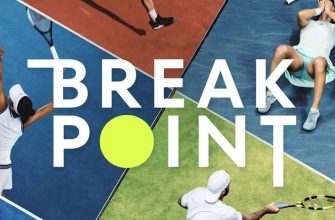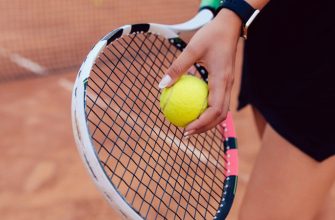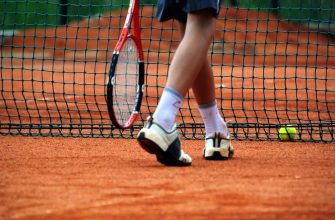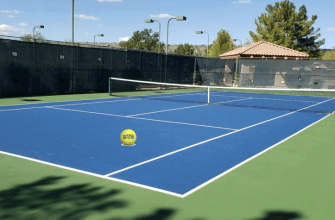Tennis has been celebrated as a sport of agility, strategy, and skill. While singles tennis is a dance of individual prowess, doubles is a ballet of teamwork and mutual understanding. It demands not just technical ability, but also seamless communication and understanding between partners.
Basic Rules of Doubles Tennis

Doubles tennis is an invigorating sport that requires strategic coordination between two teams of two players.
Let’s explore the basic rules step-by-step:
- Serve with Precision: Stand behind the baseline and hit the ball diagonally across the net to the opposite service box. It must clear the net and land within the designated area.
- Return with Agility: The receiving team should quickly return the serve, keeping it in play while challenging opponents. A well-placed return can create strategic opportunities.
- Masterful Volleys: When both teams are actively engaged, volleys take place. Players hit the ball before it bounces on their side, displaying quick reflexes and aiming for strategic placements.
- Respect the Boundaries: Players must respect boundaries during each shot. Hitting outside of them results in point deductions or even a lost point.
- Effective Communication: Constant communication is essential. Clear signals help coordinate movements and avoid confusion, making teamwork more efficient.
- Be Mindful of Cross-Court Shots: Cross-court shots open up angles on the court while keeping opponents on their toes.
In doubles tennis, maintain fair play by following etiquette rules such as acknowledging good shots from opponents without disruption. Fun fact: Doubles tennis originated from British lawn tennis at Leamington Tennis Club in 1878. Now, you’re ready to start your journey towards mastering this captivating sport! Remember – communicating with your partner is key, unless you want to end up hitting each other with rackets!
Communication and Strategies

To communicate and strategize effectively in doubles tennis, players must work as one. Communication helps them coordinate movements and make split-second decisions.
Here are key elements:
- Signals between partners
- Verbal cues
- Eye contact
- Positioning on court
Signals help teammates move together. Verbal cues let them stay synchronized during rallies. Eye contact creates understanding and anticipation. Positioning lets them cover more court and reduce vulnerabilities.
A few tips to remember:
- Establish clear signals. Use hand signals or gestures that both partners understand.
- Practice non-verbal cues. Body language and eye movements can convey messages quickly.
- Be flexible. Adjust positioning and tactics to opponents’ strengths and weaknesses.
These suggestions will help communication and strategy in doubles tennis. They’ll also reduce miscommunication errors and maximize tactical advantages. To excel in the dynamic game of doubles tennis, consistent practice and trust in your partner is a must.
Roles and Responsibilities of Doubles Players

Doubles tennis needs its players to have particular roles & duties on the court. We’ll explore these tasks and how they help a successful game.
Let’s have a look at this table for understanding the doubles player roles & responsibilities:
| Role | Responsibility |
|---|---|
| Server | Starts each game with a serve |
| Returner | Takes the serve and sends the ball back |
| Net Player | Stays at the net to hit volleys |
| Baseline Player | Stays near the baseline, strong groundstroke |
Each role has particular tasks that are essential for a successful teamwork in doubles tennis. The server initiates each game by serving to opponents. The returner’s duty is to receive the serve and hit it back in play. A net player stands at the net to intercept volleys or put away shots. The baseline player stays near the baseline, providing stability with their groundstrokes.
Also, doubles players should communicate well with their partner throughout the match. They should make fast decisions about who will go for balls and change accordingly to keep court coverage & exploit opponents’ weaknesses.
Pro Tip: Regular communication between doubles partners helps create better coordination and increases teamwork on the court.
When it comes to serving in doubles tennis, don’t forget: It’s not just about getting the ball over the net, but also about hitting your rivals with enough power to destroy their confidence.
Serving Techniques

Want to up your game on the tennis court?
Check out these proven serving techniques:
- Flat Serve – Hitting with a continental or eastern grip, this shot travels low and fast, making it tough for opponents to return. It has little to no spin.
- Slice Serve – Brush the side of the ball to create slice or sidespin. It curves away from right-handed opponents, putting them at a disadvantage.
- Kick Serve – Combining topspin and a cross-court trajectory, this serve gains height and bounce. It is effective against players who struggle with high balls.
When playing doubles tennis, technique is only part of the equation. You must also consider placement and strategy. Aim for specific areas of the court to exploit weaknesses or force errors from your opponents.
Fun fact – A well-executed first serve can increase a player’s chances of winning the point by 60%, according to the ITF. And a well-executed return of serve can leave your opponents feeling more rejected than a Tinder match on Valentine’s Day!
Return of Serve

Returning serve is an important part of playing doubles tennis. It needs focus, agility, and quick reflexes.
Here are some tips to help you ace it:
- Guess: Keep a close eye on your opponent’s movements to figure out where they’ll serve. This will help you be ready to react.
- Place: Stand behind the baseline and close to the middle of the court. This gives you better coverage of both sides. Be ready to move fast.
- Split Step: When your opponent hits the ball, do a split step by jumping slightly. This allows you to react quickly and change your position if needed.
- Ready: Get your racket back early before the ball crosses the net. This way, you can return it properly on time.
- Aim & Power: Focus on where you’re hitting and not just how hard. Try to keep the return low over the net, making it hard for your opponent to attack.
And, don’t forget to stay focused during each point, keep good footwork, and communicate with your partner.
A fun story about returning serve:
My partner and I were in a serious doubles match. We had to face two strong servers. We knew that returning their serves was key for us to win. So, we were tense and ready for each one. We had to constantly change our position and get our rackets ready early. It was a battle of reflexes. We returned many powerful serves accurately and deep, surprising our opponents. Our consistent returns put pressure on them, and we ended up winning the exciting match.
Being good at returning serve takes practice and experience. The right strategies and mental focus will make you an unbeatable opponent. So, hit the courts and try out these tips! You’ll be amazed by the results.
Net Play and Volleying
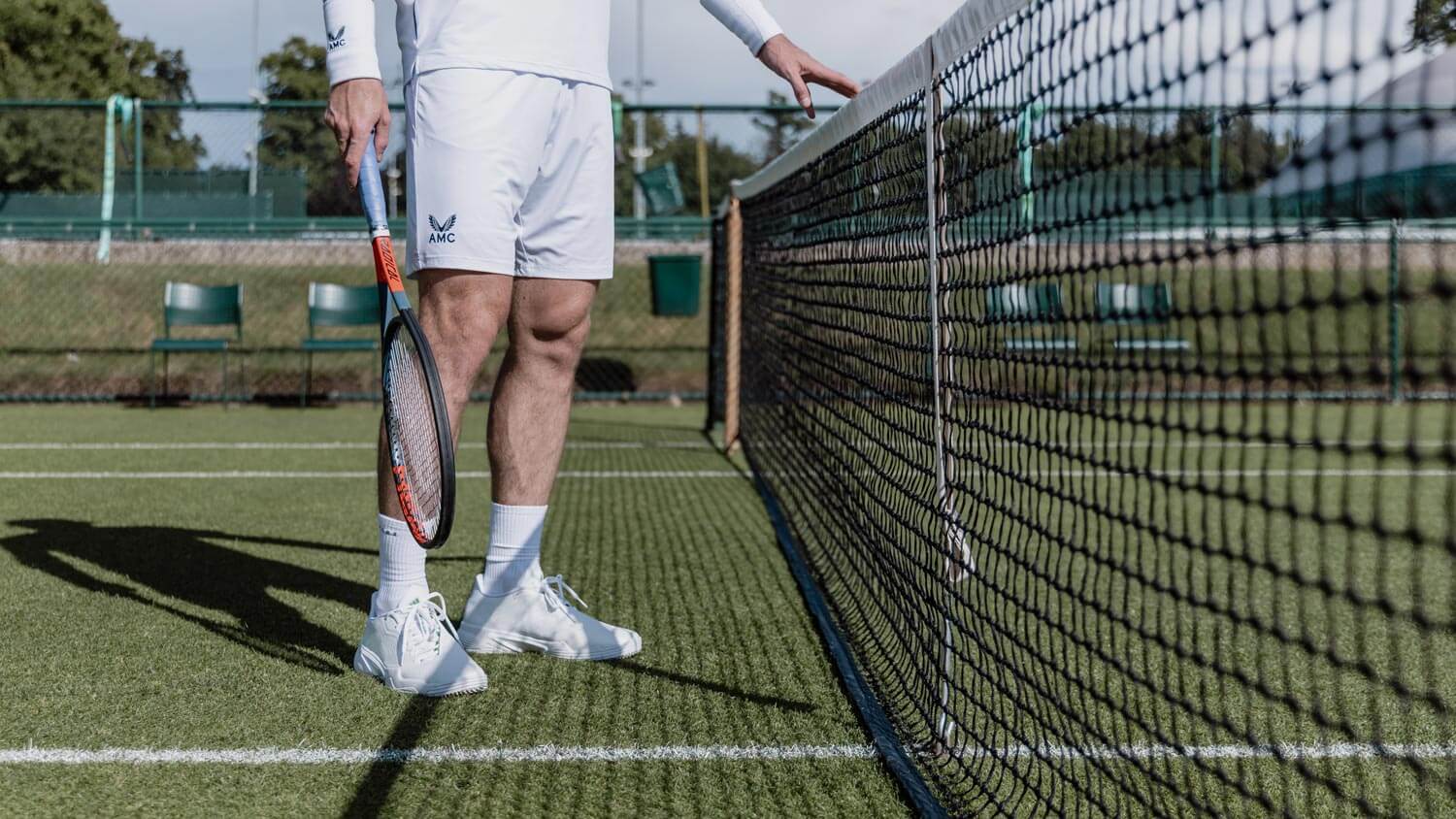
Net play and volleying are key in doubles tennis. Table 1 lists techniques and descriptions, like the split step for fast reactions, footwork to move smoothly and soft hands to control the ball. Plus, take advantage of opponents who are out of position.
| Technique | Description |
|---|---|
| Split Step | A small hop taken just as the opponent hits the ball, allowing for quick reactions. |
| Footwork | The use of quick, agile steps to move smoothly across the court without hesitation. |
| Soft Hands | The ability to absorb the ball’s pace on a volley, offering better control and aim. |
| Positional Play | Taking advantage of opponents who are out of position to exploit gaps in the court. |
Table 1: Key Techniques in Doubles Tennis for Net Play and Volleying.
For better net play and volleying, here are some tips:
- Communicate: Talk with your partner to ensure coordination and a good strategy.
- Improve reaction time: Do drills to strengthen split-steps and agility.
- Anticipate shots: Learn to guess where the ball will go and be ready for powerful returns.
Combine technique, communication, and anticipation and you’ll have a good edge on the court. Don’t get stuck in the middle – only during a dance move!
Movement and Positioning on the Court

To thrive in doubles tennis, movement and court positioning are crucial. Knowing where to be all the time helps you outmaneuver opponents.
- Get a solid base. Stand near the baseline, halfway between the sideline and the center mark. This gives you good coverage of the court and allows you to move in any direction.
- Talk with your partner. Communication is key. Come up with signals and code words to show who will take shots or cover court areas. This avoids confusion and stops both players going for the same ball.
- Cover your half of the court. Split the court into two. Each player is responsible for their own half. Anticipate where your opponent will hit the ball and move to intercept or return it.
- Use proper footwork and swift reactions. Stay light on your feet, balanced and ready to move quickly in any direction. Act fast when shots come, moving quickly towards them to stay in position.
- Know when to attack or defend. See chances to take control by going to the net and forcing your opponents with aggressive shots. Be ready to retreat and defend against strong shots or an opponent coming to the net.
- Alter your positioning for each game. Find out if you have an advantage or are at a disadvantage and adjust. If you have the upper hand, go to the net to keep pressure on your opponents. If not, use defensive tactics.
To enhance movement and positioning techniques for doubles tennis, practice regularly. It’s said that doubles tennis began because of a need to let more players use the court. This format was created in the late 19th century, allowing four players to get involved in strategic matches. Since then, doubles tennis has become a competitive sport, needing players to use movement and positioning skills for success. Doubles Tactics and Game Plans: Keep in mind, two minds work better than one – unless you’re playing against twins!
Doubles Tactics and Game Plans

Top players use key tactics to maximize success in doubles tennis.
A breakdown of these strategies:
- Communication: Partners must talk to anticipate shots, position themselves, and make effective plays.
- Net Play: Attack the net to put pressure on opponents, intercept shots, and score points.
- Court Coverage: Designate areas to cover and minimize gaps for opponents.
- Serve Placement: Place serves strategically to challenge opponents and gain an advantage.
- Poaching: Cross over and intercept shots intended for your partner to disrupt opponent’s rhythm.
Also consider: understanding partner’s strengths and weaknesses, adapting game plans, varying shots, and using different formations.
An example of these tactics in action: I watched two players dominate their opponents with communication and net play. One served powerfully, while the other poached at the net. Their strategic positioning allowed them to control the court and win. This showcases the importance of tactics in doubles tennis – don’t underestimate the opponents’ skill in mind games!
Dealing with Different Types of Opponents
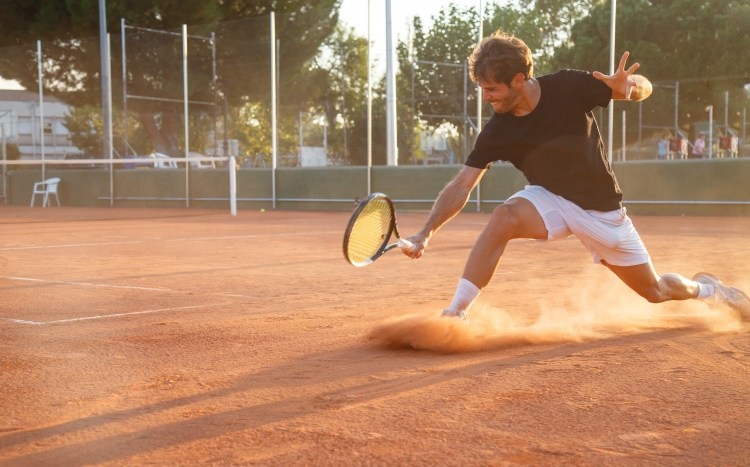
Adapt your strategy when facing different opponents in doubles tennis. Know their strengths and weaknesses to gain an edge. Adjust your court position based on their style – stay back for aggressive players, and move forward for defensive ones.
Teamwork and communication are key. Talk strategies, make quick decisions, and anticipate moves. Recognize patterns – note shot selection, serve preferences, and tendencies. This will help you adjust your own game plan.
Remember: flexibility is key! Adapting to specific strengths and weaknesses of each opponent boosts success. So double your fun with tips and drills – and don’t forget, having a partner means having someone else to blame when you miss a shot!
Doubles Drills and Practice Tips

Cross-court drill: Perfect your cross-court shots! Position yourself near the baseline, then alternate hitting with your partner. Focus on accuracy and consistency.
Net game: Volleying at the net is essential in doubles tennis. Set up a mini-net and practice with your partner.
Communication: Call shots, signal intentions, and discuss tactics with your partner during drills. This will help you coordinate strategies during matches.
Positioning: Move together as a team and cover different areas of the court. Anticipate each other’s movements.
Drills: Attack when receiving serves and defend against aggressive opponents. Drills improve decision-making and adaptability during matches.
Footwork: Improve agility and lateral movement. Practice drills that enhance speed, balance, and reaction time.
Train with pros or participate in doubles-specific training sessions.
Unspoken understanding: Understand your partner’s strengths and use them to your advantage. This allows you to strategize accordingly.
Frequently Asked Questions
Q: How many players are needed to play doubles tennis?
A: Doubles tennis requires four players, two on each team.
Q: What are the basic rules of doubles tennis?
A: The basic rules of doubles tennis include serving from alternating sides of the court, taking turns hitting the ball, and allowing the ball to bounce once before returning it.
Q: What are some effective strategies for playing doubles tennis?
A: Some effective strategies for playing doubles tennis include communicating with your partner, covering the court together, and using a combination of shots to keep your opponents off balance.
Q: How do I determine who serves first in doubles tennis?
A: Typically, a coin toss is used to determine who serves first in doubles tennis.
Q: How do I keep score in doubles tennis?
A: The scoring system in doubles tennis is the same as in singles tennis, with the first team to win six games winning the set. If the score is tied at 6-6, a tiebreaker is played to determine the winner.
Q: When can I switch sides during a doubles tennis match?
A: In doubles tennis, players switch sides of the court after every odd-numbered game (i.e. after the first, third, fifth games, and so on).
Conclusion
Doubles tennis is a thrilling variant of the traditional game that emphasizes teamwork, communication, and strategy. It’s not just about having two players on each side; it’s about those two players moving, thinking, and acting as one.



